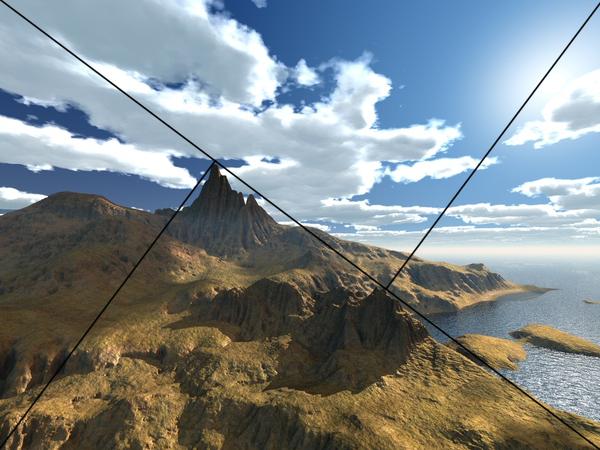Get Help - because you are worth it?
 David Brinnen
Posts: 3,136
David Brinnen
Posts: 3,136
Compositional help with this free tool made available here at DAZ 3D.
Complete with docs and tuts.
Edit. Sorry, I think that strap line belongs to some kind of hair care product - don't ask me, I'm not in marketing - or indeed have much need for hair care.


trial.jpg
933 x 700 - 287K
Post edited by David Brinnen on


Comments
Glad to see this in the store David, but a bit concerned that DAZ 3D have tagged on a paid for product from Dreamlight as as a required product. Sent you a PM
Thanks for the info Pam and for your keen observation. Since the only required product is Bryce, that is an error - I'll ask Horo to take a look at that and see if he can have it amended.
Cheers,
David.
Yeah, I've seen it right before I posted to http://www.daz3d.com/forums/discussion/17976/P135/
This product is self-contained and what is called a required product is absolutely not required. I've flagged that to DAZ 3D already.
I bagged this one, so maybe it'll help with my compositions. Thanks David/Horo.
You're more than welcome Jamie. Say thanks to Jeff (Jaderail) and Pam (chohole). Without them, it wouldn't have occurred to me to do such a thing.
I can do that Horo. Thank you Jeff and Pam for you inspiration.
:red: aw shucks.
Your more than welcome. Have fun.
Yes, thanks Chohole and Jaderail, they are a great help with scenes.:-)
Horo did all the work to convert Jeff's original (which was made for DS).so it would work in Bryce. All I did was ask Horo and David if it could be done, and they ran with it..
You know, I saw that first thing this morning when I grabbed this, and couldn't understand why it stated that, especially since it wasn't Walle's Camera Pointer product (the inspiration for Jeff and David/Horo's goodies) that it was pointing to, but something totally unrelated. Had me scratching my head for a couple of minutes, that's for sure.
A little info about what really went on. Pam sent a WIP and I layered one of the GR templates over it to explain the GR concept. She snuck off and showed Horo that one and the rest as they say is History. Horo gets all the Credit. Much better set than my DS GR's.
I, for one, am glad he ran with it. :coolsmirk:
I'll second what Miss B said.
I watched the video David made, which as usual is excellent, but it got me wondering how to know which helper to use in which circumstance. I know Jeff/Pam/Horo/David have talked about the golden rule, but since I wasn't an art major in college this is new to me. And I'd guess to many others as well. Aside from the special triangles, which require the correct aspect ratio, how does one determine which helper to use?
Well, I've neither have a proper artist education that's where David came in with the video. As I understand, you won't take a helper and build a scene around it. Rather, you do your artwork and only at the end check how things fit in. Then, you make fine adjustments to your scene. You take the helper that best fits your scene. Photographers use such rules (generally in their head, not needing crutches) to crop or rotate the final image if they missed the composition at the moment of exposure. Generally speaking, things should follow the lines, cross points are usually where an important piece of the artwork is. Cross points are focus points. KickAir 8P has a couple of good examples in this thread http://www.daz3d.com/forums/discussion/17976/P135/
I hope you will do a little research and expand yourself and the understanding of not only how to use them but to see all your future art without needing them. (I still need them myself) Many artist just get it and those I envy.
Thanks Horo, David, Jaderail and Chohole. This is something that will be very helpful.
I can't find the download link in my account. I'm I missing something.
I don't know. But right at this time, the store software seems to have some issues. Check later.
Composition is a board topic. And you will find you will encounter conflicting views. But before even considering arranging things in your scene to some geometric ideal, your might want to think about if your scene (at least for a scene which is to look "real") is consistent with what we know about the real world.
What I mean is that there are a lot of potential problems to solve before you even reach for your "helpers". And by solving these first, you may well find that that alone determines which helpers are appropriate for use.
Before composing then some things to think about.
1. Is everything in your scene appropriately sized - or do you have Vicky as tall as the mountains in the background?
2. Have you selected a suitable height for your hypothetical "viewer". Imagine yourself in the scene, where could you stand?
3. Aspect ratio of the scene and FOV alone change the composition of the scene radically. Tall and thin or landscape or square? Wide for extreme perspectives, narrow FOV for telephoto effect with compression back to front. As shown in Horo's video here.
Bryce 7.1 Pro tutorial - FOV as Compositional Tool - by Horo Wernli
Then you can go on to look at your scene critically and see if you can detect where the audiences eye will rest - these focus points could be aligned with the centre of spirals or crossing lines. And look for lines in your scene, either created by colour, shadow or geometry. Then offer up some guides and see if you can wriggle things around until they fit. Try a few and see which scene you like best.
This playlist I put together starts with camera control and then moves through the 5 to 6 part scene composition series (part 5 or 6) being the video supplied with the golden rules.
http://www.youtube.com/playlist?list=PL790l24c49DR81OY2tlP2Ou0gBRk61neJ
Let us know if that helps.
Thanks Horo, downloading the file now. I had to install the Daz Installer.
Guss - you ask all the right questions. Thanks
David - I love the way you set up your YouTube, are you going to eventually upload all your videos to your YouTube channel.
You're welcome. Strange. I don't use the DAZ installer. Just download the file and unzip it.
You're welcome. Strange. I don't use the DAZ installer. Just download the file and unzip it.
Maybe because you are part of the team ;-)
I couldn't find the download link in my account. Checking my emails I found the link but could not download till I downloaded and installed the Installer. I have it now thats the main thing. Thanks
I found it in my product library as well, as I "purchased" it to check out a store error.
Next time I will know where to check first. The zip, the exe are listed in my product library too. Thanks Chohole
@Horo/Jeff/David: Thanks all, it sort of clicked when I started reading Horo's post on page 1, and really clicked when I remembered David's video and Horo talking about lines and points formed by perpendicular lines. I some times think I carry around to much molasses between my ears. I do think about scenes I want to compose, and what I want to achieve, but getting it from gray matter to screen is still a learning process. Jeff, I more than likely will research the golden rule, or schedule it in, so I can further understand reasons and theory behind it. I have a general idea that it's done to direct the viewers' eye to a specific point or area, but I'm guessing it's a bit more in depth than that.
@mermaid: I would normally not ask such questions, for fear of being shot down by some clod; which has happened all to often in the past. But people here have shown a willingness to answer questions without putting down the questioner, so I feel comfortable asking questions that help me as well as others.